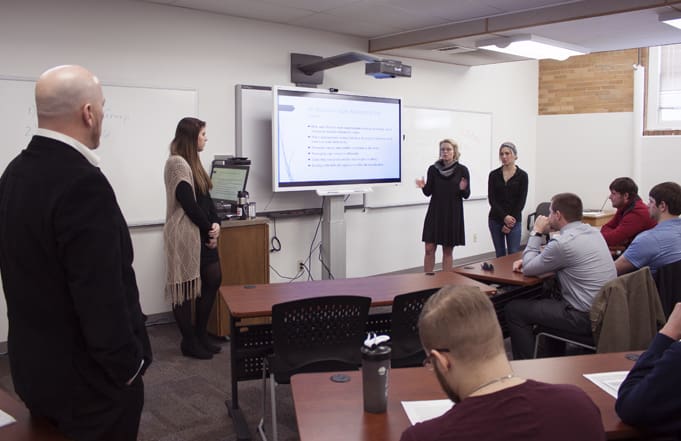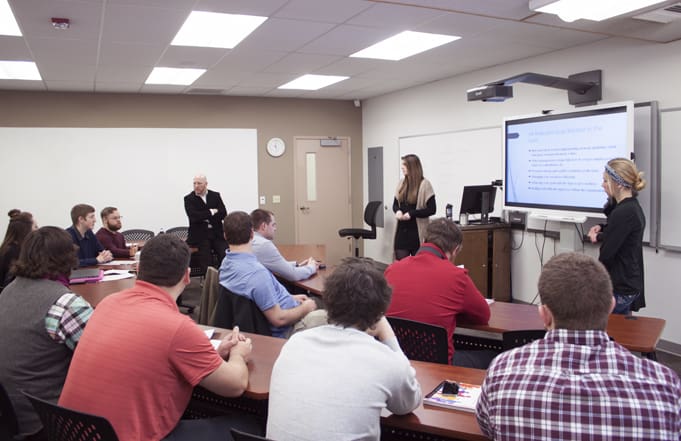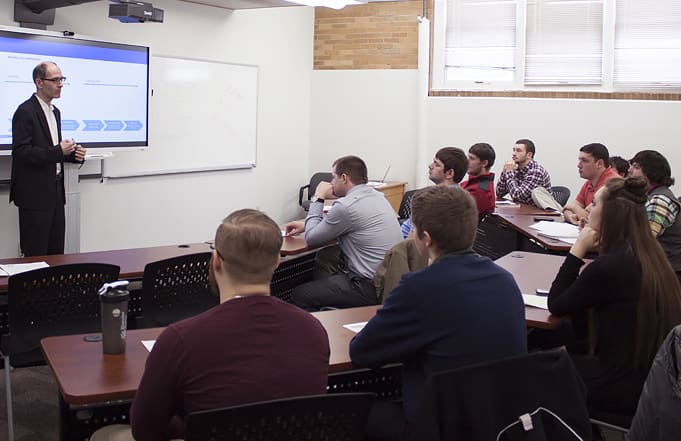March 13, 2018
At the end of block six, students in Professor Fred Chilson’s and Associate Professor Christian Gilde’s Human Resource Management class presented the case studies they wrote in order to learn how to identify human resource issues within an organization as part of their final projects.

Students in the course were asked to read a book in the format of a parable, similar in style to George Orwell’s famous “Animal Farm,” titled “How Stella Saved the Farm” by Vijay Govindarajan and Chris Trimble. The class was asked to identify the various human resource problems that occurred within the book, and how they could possibly be addressed.
According to the authors’ website, “’Stella’ is actually a composite of dozens of innovation case studies that we wrote over the past twelve years. Every detail in it, save those obviously meant to amuse, is based on the real experiences of real organizations. Several organizations, including major Fortune 500 companies such as AT&T, John Deere, and GE, have already used this book to stimulate open and non-defensive conversations about what it really takes to make innovation happen.”
Then the students were required to develop and write their own cases based on a specific human resource problem they pinpointed in the book. This method of letting students write their own case studies Chilson and Gilde call the “reverse case method.” Through this experiential learning approach, students retain much more of the material, develop their analytical and decision-making skills, improve their communication skills, and enjoy real-world learning without clear-cut answers.
Originally, case studies came from law and medical schools to give context to future lawyers and doctors. The practice was then applied to other fields of study, including business.

“This approach incorporates elements that business programs utilize in order to provide opportunities for their students to first determine the issues at hand, and then propose solutions to those issues,” said Gilde.
The book is framed around a family business model that was familiar to many of the students in the course.
“It was great to see the whole process from start to finish, and learn to identify problems in an organization. I enjoyed the diversity in the presentations- each group found unique issues within the same case study,” said Conner Hagel, a junior from Kalispell, Mont.
Other universities, including Harvard Business School and the University of Virginia’s Darden School of Business, overwhelmingly utilize the case study approach in their graduate level business courses. Students at Montana Western were able to experience what that type of extended case approach and “reversed” classroom environment is like at the undergraduate level.

“I found the hands-on learning and presentation of the case study to be rewarding in that you could combine experiences and get to know the students in the class. I found I needed to fully immerse myself in the material in order to be able to teach others,” said Courtney Rynearson, a senior graduating in the spring who plans to be a sales representative in the agriculture industry.
Professors Chilson and Gilde plan to continue incorporating the reverse case method in their upcoming business courses.
“We want to give our students the confidence to be able to teach and learn from each other, in addition to the professor. So many more ideas and possibilities are examined from the entire class’s perspective with this approach,” said Chilson.